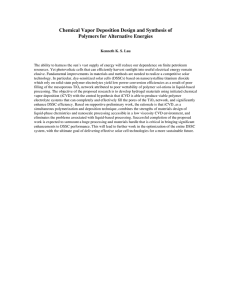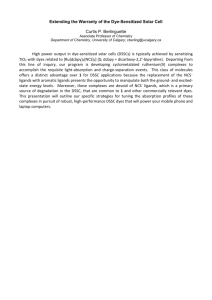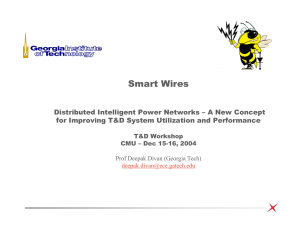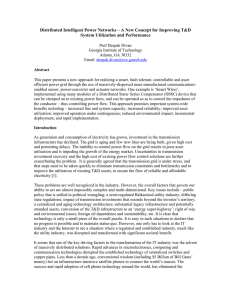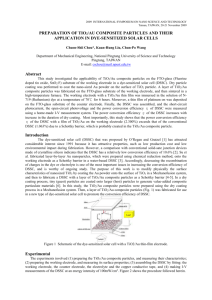Dye-sensitized solar cells
advertisement
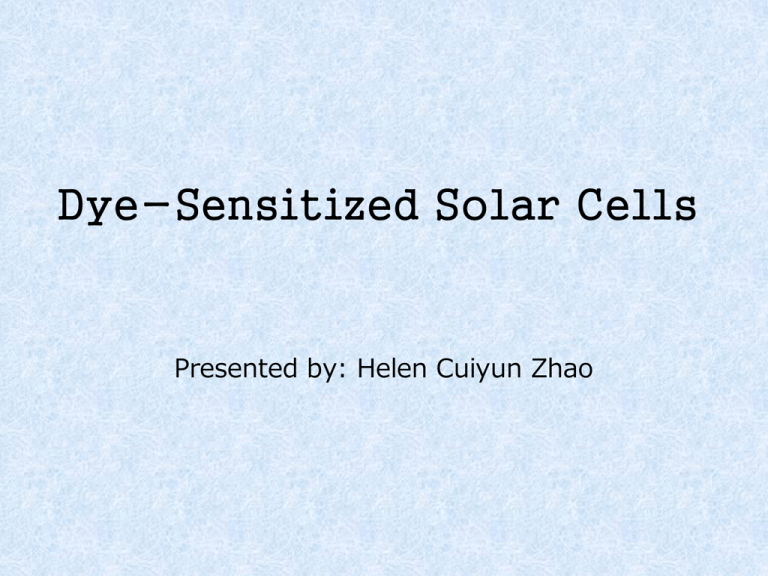
Dye-Sensitized Solar Cells Presented by: Helen Cuiyun Zhao Outline Background of Dye-sensitized Solar Cells (DSSCs) Synthesis of Ruthenium dye-sensitizer Characterization in photo-electrochemistry Development of DSSC Modules 12 Principles of Green Chem. Conclusion Irradiation of the Sun Chem. Rev. 2010, 110, 6595–6663 Composition of DSSC The DSSC device consists of 4 components: semiconducting electrode • n-type TiO2 and p-type NiO Dye-sensitizer • Light harvesting and electronic transition Redox mediator • I- / I3- or CoII / CoIII complexes Counter electrode • Carbon or Pt Chem. Rev. 2010, 110, 6595–6663 Dye-sensitizers Mechanism Energy Levels of DSSC Chem. Rev. 2010, 110, 6595–6663 Synthesis DMF Bpy ligand RuCl2 dimer JK-206 CNN ligand DMF JK-207 Light Harvesting — UV-vis spectroscopy Excited state chemistry -Density Functional Theory LUMO +2 LUMO +1 LUMO HOMO HOMO +1 JK-206 JK-207 Electrochemistry Validation of DSSC Dye λ abs (nm), ε (M-1cm-1) Jsc (mA cm2) Voc FF η (%) JK-206 391 (19800), 527 (18000) 19.63 0.74 0.72 10.39 JK-207 368 (38700), 530 (16800) 13.83 0.69 0.66 6.32 N-719 380 (13100), 520 (1300) 18.79 0.75 0.7 9.8 Development of DSSC Flexible DSSC Module Glass-based DSSC Module Homemade DSSC http://alpha.chem.umb.edu/faculty/rochford/documents/Artificialphotosynthesis-aworkshopinsolarcelldesign.pdf 12 Principles of Green Chem. Conclusion • DSSCs show the most promising future due to their independence, environmentally friendly, low maintenance, and low cost . • A solar energy system can be installed in any location without a connection to a power grid. • The initial investment is expensive. Once the use of electricity reaches to a certain point, the solar energy is free. • After installation, there is no recurring cost and it can be used for a long time. Thank You!
